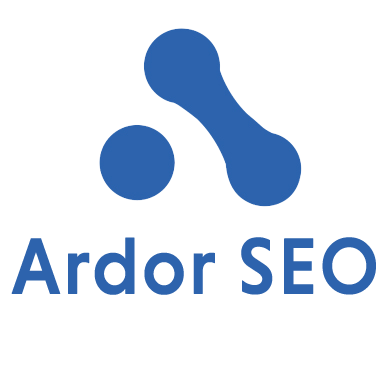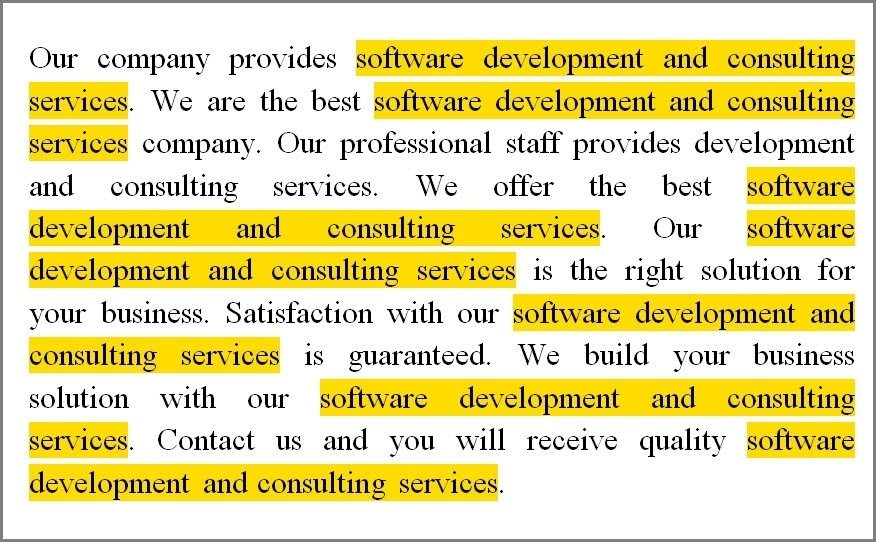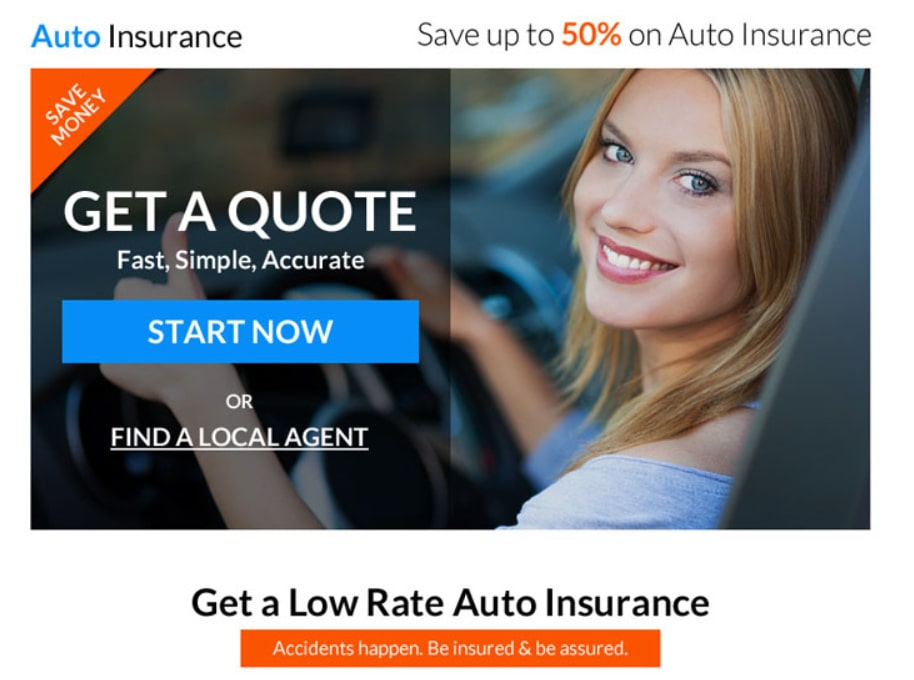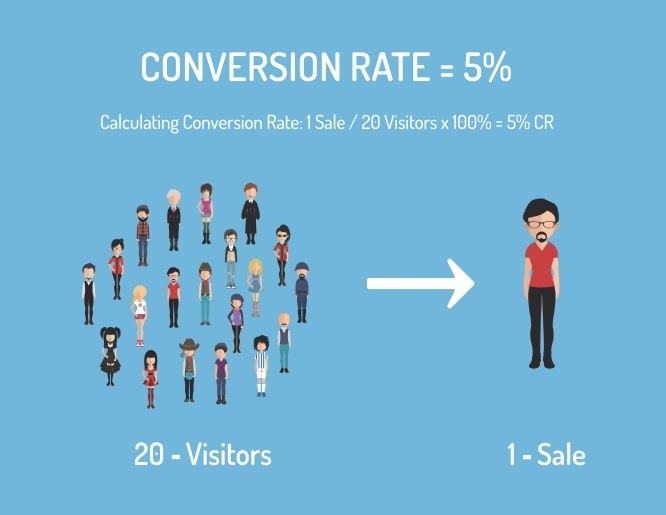
5 THINGS
YOUR WEBSITE NEEDS
By Kris Reid, CEO of Ardor SEO

MOST WEBSITES DON'T PERFORM
Every business owner knows they need a website, but still, the majority of business owners don’t really understand why. Your website is not a stale old document like your mission statement that no one read since it was written.
Your website should be the lifeblood of your business. It should be getting your message in front of the very people that are actively searching for exactly what you do and invoking those people to take action and become customers!
Your website should be fueling your business growth with a predictable, reliable, steam of new customers. If it’s not, you’re missing out on millions of dollars!
Where does anyone go when they’re looking to purchase a new product or hire a service provider? Google!
If those people search for precisely what you do but can’t find you, they can’t become a customer. If they’re not finding you, they’re finding your competition.
Your website needs to reflect what your potential customers are searching for. You need to show Google that you’re the perfect answer to that person’s search query. Then Google puts your website right in front of where that potential customer is actively looking.
2
What can be more powerful than that, to grow your business?
At Ardor SEO, I’ve helped 1,000s of businesses, non-profits, and personal brands to get their website in front of their potential customers.
Below are the 5 most common suggestions I regularly make, to improve website performance and get more customers.
Make these five changes and you’ll get your website in front of your ideal customer, increase your sales, and stop losing to competition.
Sincerely,

Kris Reid
3
1. Your website’s message needs to match what your potential customers are searching for in Google
What exactly are your potential customers searching for?
Sometimes it’s easy. Italian Restaurant near me, Emergency Plumber Sydney, or Buy Pink Furry Kitten Mittens Now.
But sometimes, searchers don’t know that your business is the solution to their problem. Think of the old adage, when someone buys a drill, they don’t want a drill, they want a hole. Your potential customers are searching for the hole (problem), not the drill (solution).
Finding what your potential customers are searching for, and in what quantity they are searching is called Keyword Research.
We could speak for days on this topic! We’ve added many advanced articles and tutorials on keyword research to our website but they are generally for Search Engine Optimization experts.
Here we’ll keep it light, which will be more than enough to get you started in building a website that generates you, customers.
4
Google Suggest
Google your primary keyword but don’t hit enter!
e.g. "How to get more customers"
Instead, make note of the drop-down search suggestions. You can also search "How to get more customers in" [don’t hit enter], How to get more customers on" [don’t hit enter], and every other preposition to get the most popular and/or trending-related searches.

Using Google Suggest to research keywords
5
RELATED SEARCH
Type your keyword into Google and scroll to the bottom of the page. You’ll see all the other searches related to your initial search query. These are actual keywords that real people search when they are looking for your initial search query. When trying to rank in Google, there is no better search data, than Google!

Using Related Search terms to find what else people are searching for
There are many more advanced techniques and paid tools that can help you generate long lists of hundreds of thousands of keywords, but realistically, you know who your customers are, right? Get into their mind. What are they typing into Google when they’re looking for you?
Brainstorm a list of the most popular terms and phrases that your potential customers will search for. That list alone will put you streets ahead of most business owners and web designers that have never given a second thought as to what their potential customers are actually searching for on Google.
6
2. Your metadata, title tags, & descriptions, should entice your potential customers to click on your website
Before potential customers have a chance to see your products, your services or even website, the first thing they’ll see is your metadata. Your metadata will appear in Google Search alongside all of your competitors. If your title tags and descriptions don’t compel the search to click on your listing, it doesn’t matter how awesome your website is, the searcher will never see it!
The title tag is the most important tag! It shouldn’t mention you or your business. You have 580 pixels. With that limited space, each pixel needs to work hard! Here you want to limit it to just one or two primary keywords.

The title tag of a webpage should include your primary keywords
In the above example, we want to rank this page for “White Label SEO” and “SEO Reseller” so we get both of those keywords into the title tag. Ranking is not enough, we also need to attract the searchers click, so we convey trust by mentioning our Award-winning Service.
Arguably the 2nd most important part of any web page, the meta description! Again there’s limited space, just 920 pixels, so you need to make every word count! The meta description should support your title tag. It needs to convey a similar meaning, target similar keywords, and convince the searcher that you’re the answer to what they are looking for.
7

The description tag of a webpage should include your secondary keywords
Here we reaffirm SEO Reseller but also add in Private Label SEO which is an industry term and synonym of white label SEO.
We convey authority by showing we only use White Hat techniques, guaranteed results, and are a trusted service.
In the example, we use quite a bit of industry jargon, as this page is specifically designed for industry insiders that use our services for their clients. Always keep in mind, who is the particular web page for.
If it’s industry insiders, you can save space and increase conversions by using jargon. But as a rule of thumb, always use the most basic layman’s terms when describing your products or services.
8
3. Beautiful websites don’t sell things, words sell things
It drives me crazy that web designers don’t understand this one rule: beautiful websites don’t sell things, words sell things! They violate this principle regularly, and it’s costing businesses millions of dollars!

One of our most recent customers had previously forked out $20,000 for a beautiful website and marketing that gave him no new visitors, no new customers, and zero return! Twenty thousand dollars! That just breaks my heart to hear a struggling business owner, invest so much of his hard-earned money to grow his business, and it falls flat because the designer violated this simple rule.
A website is like a business card. A business card doesn’t work if you don’t hand it out. And a website doesn’t work if people can’t find it!
We’ve already discussed how to work out what your potential customers are searching for in Google and how to get them to click on your search result, but one of the biggest factors of where or if your website appears in Google search, comes down to your content.
Google is smart. They have the best software engineers on the planet, constantly enhancing some of the world’s most advanced algorithms. But as smart as Google is, they can’t rank pictures. Google doesn’t know what a picture of your smiling customers, your team, or even your product is meant to rank for.
Google reads the text on your website, analyses it for keywords and determines just how relevant your message is to the search query. In a nutshell, the more relevant your content to the search query, the better you’ll rank.
9
Write for your customers, not for robots!
At the end of the day, it doesn’t really matter how well you rank in Google nor how many visitors you get to your website. What really matters, is how many new customers your website generates.
Your content needs to be clear, concise and shows that you’re an absolute expert in your field.
Keyword targeted, not keyword-stuffed!
Your content needs to include the main keywords that you want to rank for, but you don’t need to stuff the content with as many keywords as possible. Google is smart - they’ll analyze your content and your website, and you’ll rank for your main keywords plus many more.

Avoid stuffing your content full of keywords to ensure your content looks natural
Always focus on quality. Quality original content that your potential customers will want to read. Quality original content that answers the potential customer’s search query. Content that shows you’re an expert and why they should buy from you.

A graph of the number of words on a page related to Google search positions
As a general rule of thumb, you should aim for 500 words of content on every page. Google trusts longer content, but it must be quality content. Writing content takes time and effort, and Google will reward you for your effort!
10
4. Your website should include an obvious call to action
Now that you’ve got them to your website, what do you want them to do? You know your business inside out. You know what your products and services do, and exactly how they make your customer’s lives better. You know your website like the back of your hand. Precisely where to find each bit of information and how to navigate your sales process.
Guess what? Your visitors don’t have a clue! They don’t know who you are. They don’t know what you sell. They don’t know how your company can improve their lives. And they certainly don’t know how to navigate your website!
MAKE IT EASY FOR YOUR CUSTOMERS.
You need to make it easy for them or they’ll go to someone else that does.
When a visitor first lands on your webpage, you’ve got seconds to let them know that you’re the solution to their problem. Did you read about Netflix history when you signed up for an account? When you were searching for health insurance did you care that the firm was founded in 1872 by two brothers? Remember the first law of sales. No one cares about you. Everyone is thinking, what’s in it for me. So make it about them, serve them, serve your visitor.

A CTA with a secondary transitional CTA.
Your website should be very obvious at conveying how you are the solution to their problem and guiding them on how to take action. If they want more information on who you are and your history, they can find it on your internal pages.

A CTA guiding them on how to take action, and what the next step is.
11
5. Your website should generate you consistent, predictable, business growth
Most businesses fail not because they don’t have good products or services, and they certainly don’t fail because entrepreneurs aren’t working hard enough! Most businesses fail simply because they can’t get enough customers.
Even when customers are coming in, it’s not consistent. You might have fifty sales last week, zero this week and five the next week. How can you manage your business without consistent, predictable, reliable revenue? How much product do you need? How many staff do you need? When are you going to need a new office space? What a headache!
It doesn’t need to be this way!
With keyword research and Google trends, you can see exactly how many people are searching for your products and services in this quarter and next quarter. Imagine the security of knowing you’ll have 5%, 10%, or 25% more customers next quarter!
By fixing your metadata and content, you can get your message directly in front of where these people are actively searching for precisely what you do. And with a strong call to action, you can invoke them to become customers.
With Google Analytics and Google Tag Manager, you can accurately measure what people are doing on your website, where they are falling off, and how many convert to customers. From this data, you can reliably predict exactly how many visitors you need to hit your business growth goals.

Use Google Analytics and Tag Manager to measure your Conversion Rate.
If you want 1 sale per day, you need 20 new website visitors per day. If you want 100 sales per day you need 2,000 visitors per day. Simple!
It’s simple but not easy to achieve! Creating a valuable digital asset takes time and a solid commitment, but isn’t financial security worth the investment?
Implement these 5 steps and you’ll be well on your way to having a website that fuels your business growth. Want some personal help?
Let me make a tailor-made review of your website. I’ll personally take a look at your website, your market, and show you things you can fix yourself to:
- Get your website in front of the people actively searching for precisely what you do
- Turn those visitors into customers
- Achieve predictable revenue to Grow Your Business!
WHAT DO OUR CUSTOMERS SAY ABOUT US?

Rebecca Davidson
Sparrow Early Learning
It is always a pleasure working with Kris from Ardor SEO. Kris is knowledgeable and always recommends the best solution for our business. Thanks again to you and your team for your superior service Kris.

Garuda Nicolle
Organic Turmeric
Currently working with Kris. SEO is important for any business, and Ardor definitely know what they're doing and give long term strategies. Definitely worth working with them.

Emma Reynolds
iQmetrix
Kris is very knowledgeable about SEO! His team helped us through an extensive SEO audit and strategy. The audit was very in depth, and was very helpful for us to identify problems on the site.

Andrew Royer
Royer Accounting, CPA
Really impressed with the Market Visibility Blueprint information that I've received. I was provided with a lot of great information and insight into how our website can be improved upon. The strategy that Kris put together is exciting and I'm looking forward to seeing it put into action and the results that should come with it. Looking forward to working with the Ardor team and hopefully seeing the results translated into more customers.
Let me make a tailor-made review of your website.

